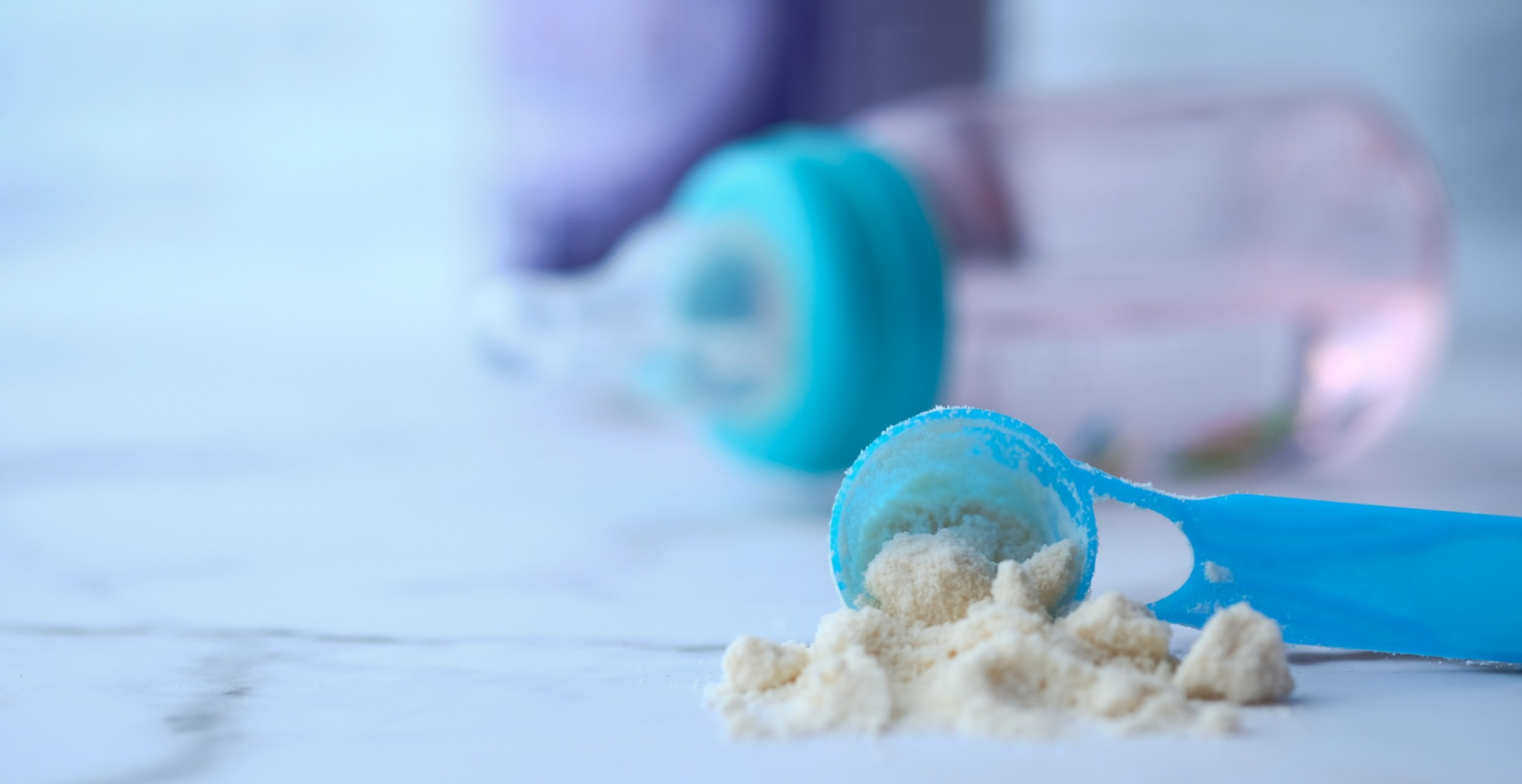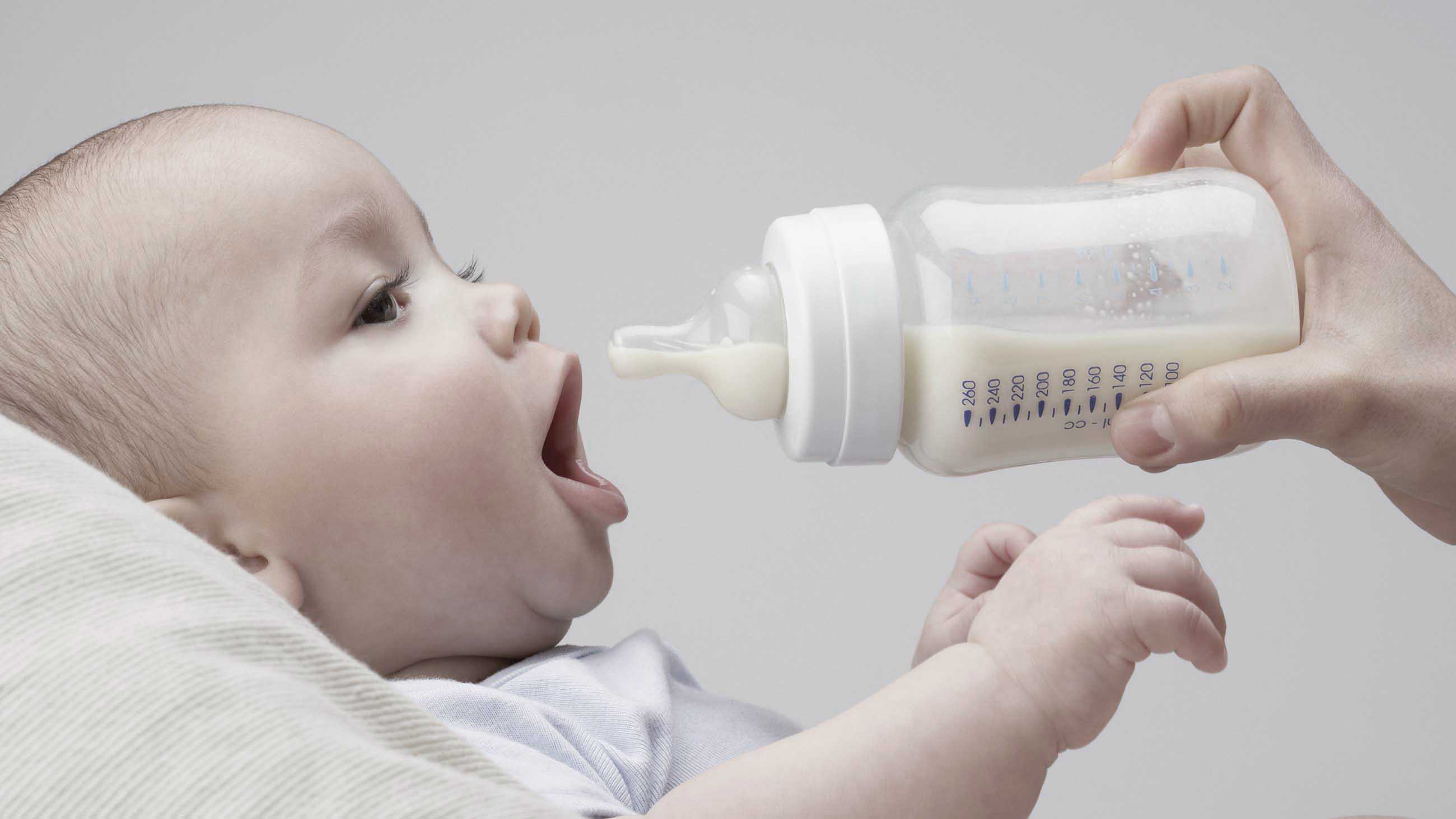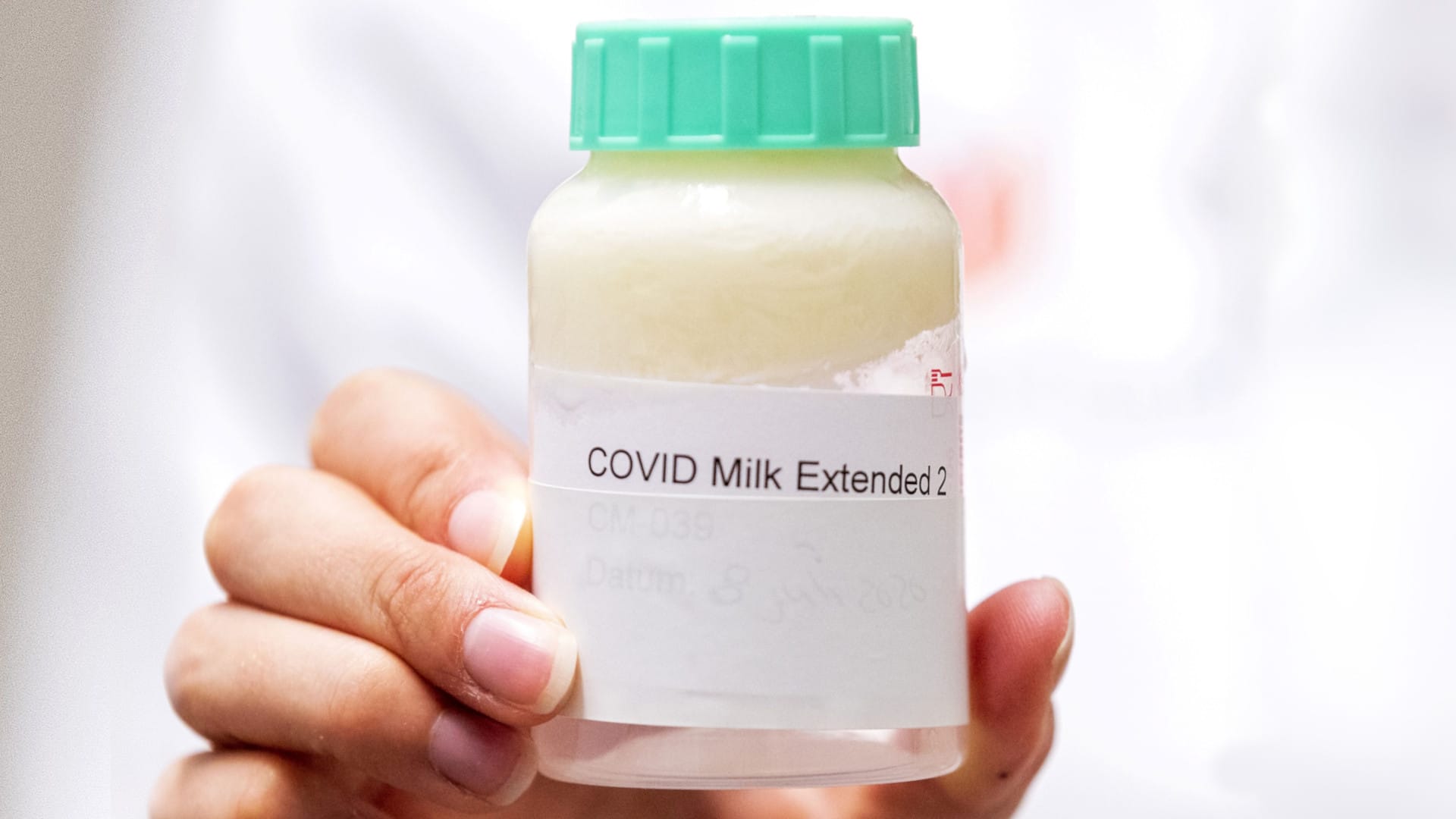Why is Corn Syrup in So Many American Infant Formulas?
All mammals, including humans, make milk with carbohydrates in the same unique form: lactose, a sugar that is a fusion of two other sugars called galactose and glucose. While scientists don’t know why all mammary glands arrange sugars this way, many believe that it’s important for babies. And growing evidence suggests that lactose substitutes in infant formula, such as corn syrup solids, may have health consequences, though the research comes with caveats and experts caution against swapping formulas amid a lingering shortage.
Research indicates that corn-syrup-based formulas are metabolized differently by infants compared to lactose-based formulas and human milk. Small studies have shown that the former alters the infant microbiome, as well as eating habits of toddlers. And a new study, published this August in The American Journal of Clinical Nutrition, followed 15,000 infants and suggested a higher risk of obesity at age four for those who were fed corn-syrup-based formula compared to those who were fed lactose-based formula. The study tracked children who received free formula through the Special Supplemental Nutrition Program for Women, Infants, and Children, or WIC.
Nearly half the babies in the U.S. receive benefits from the program, and most are fed formula. In every state, WIC formula options are limited, and in most states there is only one that contains lactose carbohydrates. (Due to the formula shortage, many states have temporarily allowed WIC participants more options, though that is set to expire at the end of the year.)
Historically, most infant formulas contained lactose, but according to recent purchasing data, about half of all infant formula sales are now for lactose-reduced or lactose-free formula, compared to just a small fraction of sales a few decades ago. These formulas replace some or all of the lactose with corn sugars; most often corn syrup solids, sometimes maltodextrin, both of which are just glucose.
Companies that sell lactose-free or lactose-reduced formulas often claim that the products help fussy, gassy, crying babies. Robert Boyle, a children’s allergy specialist and researcher at Imperial College London, told Undark that he hasn’t seen “good evidence” that lactose-free or low-lactose formulas “have any positive benefits in that sort of context” noting that few healthy babies need lactose-free formula. But formula marketing focuses on fashionable concerns and mother’s insecurities, not health issues, he explained. “It’s all smoke and mirrors,” he said about the health claims.
Although the U.S. Food and Drug Administration regulations cover 30 required nutrients in infant formula including protein, fats, and vitamins, they don’t cover carbohydrates. Meanwhile, the European Union limits the amount and types of sugars allowed in standard formulas, and bans corn syrup.
Whether corn syrup is the right substitute for lactose in formula is something that Michael Goran, a pediatrics professor at Children’s Hospital Los Angeles and author of the recent WIC study, questions. Someone who is lactose intolerant, “wouldn’t put corn syrup on cereal instead of milk,” he pointed out, “they buy milk with lactase added,” referring to the enzyme that digests lactose.
While older children may lose the ability to digest lactose and become lactose intolerant, very few babies are lactose intolerant, said Anthony Porto, a pediatric gastroenterologist at Yale. Only babies born with a rare hereditary disease called galactosemia are completely unable to digest lactose. Some experts, including Carolyn Slupsky, a nutrition professor at University of California, Davis, argue that if a child doesn’t have that condition, they shouldn’t have lactose-free formula. “All formulas, unless they are specifically for a child with galactosemia, should be lactose-based,” she said.
For parents who don’t rely on WIC, there are many lactose-based formula options if their baby is otherwise healthy. Still, even many formulas advertised as made from milk may not contain lactose. These may say “milk-based” on the front label because the protein component of the formula comes from cow’s milk. But these formulas — which are often labeled as sensitive, gentle, comfort, or soothe — still use corn sugar, rather than lactose, as a carbohydrate.
When a baby has trouble digesting a formula, lactose isn’t usually the problem, Porto said, the protein is, and research supports this. For babies having certain digestive issues, Porto recommends a formula with proteins that have been broken down, or hydrolyzed, to make them easier to digest. However, there are no fully hydrolyzed formulas, and only a few partially hydrolyzed formulas, made with lactose. Because most babies with digestive issues are still able to digest lactose, Porto believes there should be lactose-based formulas with broken-down proteins available.
According to Boyle, the only time that an otherwise healthy baby might benefit from lactose-reduced formula is for a short period after a gastrointestinal disease, like a bout of diarrhea, which “can damage the lining of the gut,” and may make them temporarily lactose-intolerant. Usually this intolerance only lasts a couple of weeks, he added. But there isn’t solid evidence to suggest that lactose-reduced formulas help with colic, gas, or fussiness — the research that suggests that it might are small studies run by formula companies. (For babies with more serious issues, like cow’s milk protein allergy, studies suggest that formulas with hydrolyzed proteins that are lactose-free can help, but formulas containing lactose along with fully broken-down proteins have not been studied.)
A spokesperson for the Infant Nutrition Council of America, which represents the four largest infant formula manufacturers, wrote in an email to Undark: “Infant formulas are rigorously regulated by the U.S. Food and Drug Administration (FDA), and all ingredients used must be deemed safe and suitable by the FDA for the intended use in infant formulas. Infant formulas are nutritionally complete and need a source of carbohydrate to provide energy. Corn syrup solids and maltodextrin have been clinically shown to be well-tolerated carbohydrate sources for infants with food allergies or gastrointestinal disorders who are unable to consume breastmilk or standard formula.”
There’s an ongoing debate about potential health consequences linked to formula, regardless of whether it contains lactose. Formula has been linked to higher infant mortality, more infections in infancy, lower wages in adulthood, higher cancer rates in adulthood, increased risk of obesity, and more. However, no studies have proven that formula is a direct cause, and many of the links may be because lower income people, who are already at risk for these issues, are more likely to feed formula. Plus, there are knowledge gaps about whether certain components of human milk could give babies an extra benefit when added to formula, or whether substituting ingredients could put them at risk.
While the balance of nutrients can differ among mammals’ milks, for many, including humans and cows, lactose is the most abundant component. Lactose takes time for the body to digest into the form of sugar our body readily uses — glucose — Slupsky explained. With corn sugars, glucose enters the body all at once, leading to big spikes in insulin. For glucose, the glycemic index, which is a numerical indication of blood sugar rise, is more than double that of lactose.
The long-term effects of these larger insulin spikes in babies hasn’t been well studied. The new WIC study by Goran and colleagues is the first to track babies who were fed corn-syrup-based formula well beyond infancy. They found a 10 percent increase in obesity at age two, and a 7 percent increase at age four compared to babies who were fed lactose-based formula.
“When we look on the absolute scale, it’s roughly two out of 100 additional children who received this formula with corn syrup solids were obese compared to those who received the other formulas. And that was consistent at ages two, three, and four years,” Goran explained. “Of WIC participants nationally, roughly 15 out of 100 will be obese by the time they age out of eligibility” at age four, said Christopher Anderson, an author of the study and an epidemiologist at Public Health Foundation Enterprises (PHFE) WIC, a program of Heluna Health, which serves women, children, and families in Southern California.
“Obesity already is a public health crisis,” noted Shannon Whaley, a director of research at PHFE WIC. “What else can we be doing to attenuate that risk? Well, to me, it’s clear from this research that formulas that have corn syrup solids confer additional risk.”
In an email to Undark, Bridget Young, an infant nutrition researcher at University of Rochester, wrote: “This paper provides excellent public health data that is useful for informing regulations and future research.” Young, who was not involved in the research, also noted: “This study is not enough to suggest that any parents go out and change their formula due to these results, especially since we parents are still facing limited options due to the formula shortage.”
It’s unclear why corn syrup is so common in infant formula to begin with. Goran said he believes that the only explanation “is that it’s an economic thing — that is cheaper to make, and more money can be made from it.” But Porto suggested a less nefarious reason, at least for formulas that contain broken-down proteins — these proteins taste bitter, and corn syrup solids can make them more palatable. However, he said these formulas could instead be made with mostly lactose and just a little bit of some kind of sugar to disguise the bitter flavor.
For now, some experts, including Porto and Slupsky, said that the U.S. should do more to ensure that all babies have access to lactose-containing formula. After all, Slupsky added: “There’s a reason that all mammals have lactose as their primary carbohydrate source.”
Christina Szalinski is a freelance science writer with a Ph.D. in cell biology based near Philadelphia.













Comments are automatically closed one year after article publication. Archived comments are below.
Very disturbing.. we will soon have over weight diabetic infants
Formula companies are certainly not in the business of keeping infants healthy. It is all about the money. Cheapest ingredients is better for the bottom line. Support and education for women to breastfeed prior to delivery in vital. Support from family, and employers is needed. Breast is best. There are very few situations where that is not true. The excuse of lack of milk or it is too difficult is to over used. Dedication, education and support is the key to success. Formula companies have been evil for a very very long time. It is no surprise nor is it new.
“It’s unclear why corn syrup is so common in infant formula to begin with.” It may be to get the child’s microbiome prepared for the processed food they will eat in the future. It often has an excess of corn syrup or starch. Then the whole processed food industry can benefit from more customers.
Interestingly, before commercial formulas were available I believe (circa 1953), Homemade formula included Karo syrup as well as milk and water. Ask me how I know.